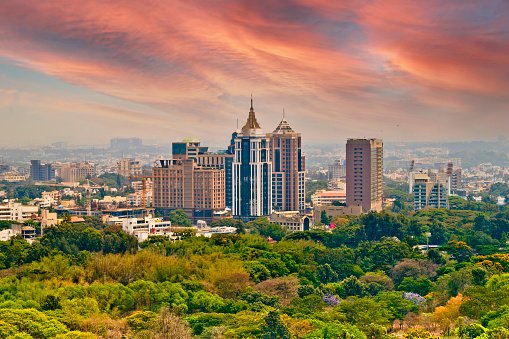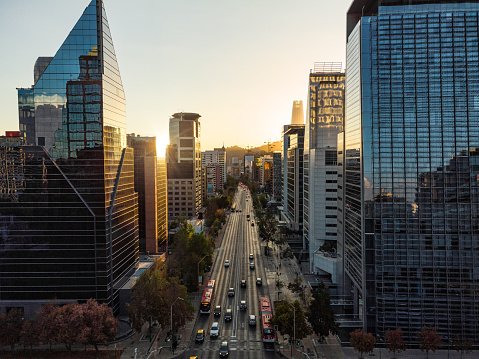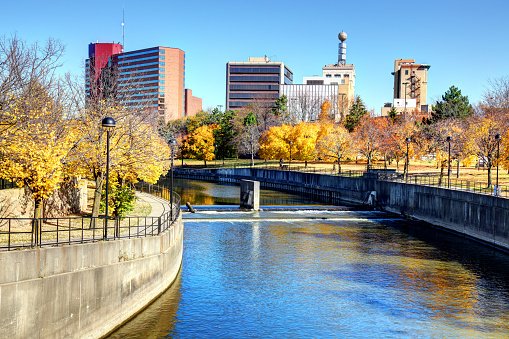Although having access to clean water is a basic human right, many communities around the world have difficulties in getting and distributing clean water to their populations. Also, those who are poor may have a difficult time paying for water. In this post, we'll look at a few of the locations where these issues are prevalent and talk about the causes, remedies, and initiatives being taken to solve them.

Sub-Saharan Africa:High rates of waterborne illnesses and a lack of access to clean water.
The World Health Organization (WHO) estimates that more than 40% of people in Sub-Saharan Africa lack access to safe water. Many residents of this area rely on tainted water sources, which can cause fatal waterborne diseases. Water can also be expensive in some places, which makes it difficult for low-income households to afford.
The absence of water system investment and infrastructure is one of the key contributors to this issue. Sub-Saharan African communities frequently lack access to piped water infrastructure, and those that do frequently struggle with maintenance and upkeep. As a result, a lot of people rely on bacterial and parasitic-infested surface water sources like rivers and lakes.
In recent years, initiatives have been made to increase Sub-Saharan Africa's access to clean water. For instance, the African Regional Initiative for the Elimination of Cholera, a program run by the WHO, attempts to increase access to sanitary facilities and clean water in high-risk communities. Additionally, non-governmental organizations (NGOs) are working to build wells and other water systems and provide clean water to communities in need. Examples of these NGOs include WaterAid and charity: water.

India: Increasing Water Access, but Struggling with Water Cost.
Despite improvements in India throughout the years, many people still do not have access to safe drinking water. In addition, water is frequently expensive, particularly in urban areas. Low-income households may be forced to spend a sizable amount of their income on water, which can be a substantial strain.
The lack of funding for water management and infrastructure is one of the key factors contributing to the issue in India. The lack of proper water treatment and distribution infrastructure in many Indian cities and towns causes water sources to become contaminated and waterborne diseases to become more widespread. In some locations, the availability of water is also being impacted by climate change, which is aggravating the issue.
Efforts are being done to provide access to clean water. The Swachh Bharat Abhiyan and the Jal Jeevan Mission are two government-sponsored initiatives that aim to improve sanitation and make clean water accessible to all families in the nation. Organizations like Water.org and WaterAid are also trying to give communities in need access to clean water and sanitary facilities.

Latin America:While there has been progress, some communities continue to face high costs and lack access to clean water.
Although there has been substantial improvement in South America's water access, many communities still have difficulty getting access to clean water. Water can also be expensive in some places, which makes it difficult for low-income households to afford.
The lack of funding for water management and infrastructure is one of the key factors contributing to the issue in South America. Moreover, poverty and inequality worsen the issue by limiting access to financing and resources.
Throughout South America, efforts are being done to provide access to clean water. With initiatives like the Water and Sanitation Initiative, the Inter-American Development Bank (IDB) is trying to enhance water management and infrastructure in the area. Organizations like Water For People and WaterAid are also trying to give people in need access to clean water and sanitary facilities.

Flint, Michigan:Water Crisis Caused by Excessive Lead and Other Contaminant Levels.
The Flint water crisis, which started in 2014 and harmed thousands of people in Flint, Michigan, was a serious public health disaster. A change in the city's water source, which led to elevated levels of lead and other toxins in the water, was to blame for the catastrophe.
An oversight and management gap in the government led to the Flint water disaster. The decision to convert to the new water source was made despite the potential concerns being warned about by experts in an effort to save money. In addition, inadequate testing and treatment of the water by the authorities resulted in a public health emergency.
The Flint water problem has been addressed, and the community now has access to safe water. The city is taking steps to improve water treatment and distribution while also returning to its original water source. Organizations have also offered the community assistance, including water filtration devices and bottled water, including the United Way and the Flint Water Fund.

Cape Town, South Africa: Profound Water Crisis a result of the drought and severe water restrictions.
Due to a combination of the drought and stringent water restrictions, Cape Town, South Africa, had a serious water crisis in 2018. The emergency served as a wake-up call for the city and brought attention to the value of water management and conservation.
A number of issues, including climate change, population increase, and insufficient water management, contributed to the water problem in Cape Town. Many reservoirs that were used for the city's water supply were reduced as a result of the drought. The city's population had also increased dramatically in recent years, which put pressure on the water supply.
Efforts have been made to address the city's water crisis and enhance water management. The city has put measures in place to decrease water consumption and boost water supply, such as building desalination facilities and promoting water-conservation techniques. In South Africa, communities that lack access to clean water and sanitation are being helped by NGOs like the Water Project and WaterAid.
Causes of the Problem
Many reasons, such as a lack of investment in water infrastructure and management, climate change, inequality and poverty, and shortcomings in government management and monitoring, can be blamed for the lack of access to clean water and the high cost of water in many parts of the world.
Access to clean water and increased water affordability depend on investments in water infrastructure and management. The quantity and quality of water can be affected by climate change in many different ways, thus it is an important element to take into account. Poverty and inequality make the issue worse by restricting access to financing and resources. Failures in government administration and monitoring, such as those in the Flint water crisis, can have serious repercussions for the availability and quality of water.
Solutions and Efforts
The lack of access to clean water and the high price of water are global problems that are being addressed with a number of solutions and initiatives. Promoting water management and conservation methods is important, as is investing in water infrastructure. Increasing water access and affordability can also be accomplished through implementing government programs and community-led initiatives that provide access to clean water.
The improvement of access to sanitary facilities and clean water is greatly helped by NGOs and international organizations. International organizations like the WHO and the IDB provide funding and support for water management and infrastructure programs, while non-governmental organizations (NGOs) like WaterAid, Water.org, and the Water Project work to provide clean water and sanitation to communities in need through the construction of wells and other water systems.
Although having access to clean water is a basic human right, many communities around the world have difficulties in getting and distributing clean water to their populations. Both the scarcity of clean water and the high price of water can have serious negative effects on the health and welfare of the general populace. To solve this issue, however, there are answers and initiatives being done, such as investment in water infrastructure and management, promotion
Posted Using LeoFinance Beta